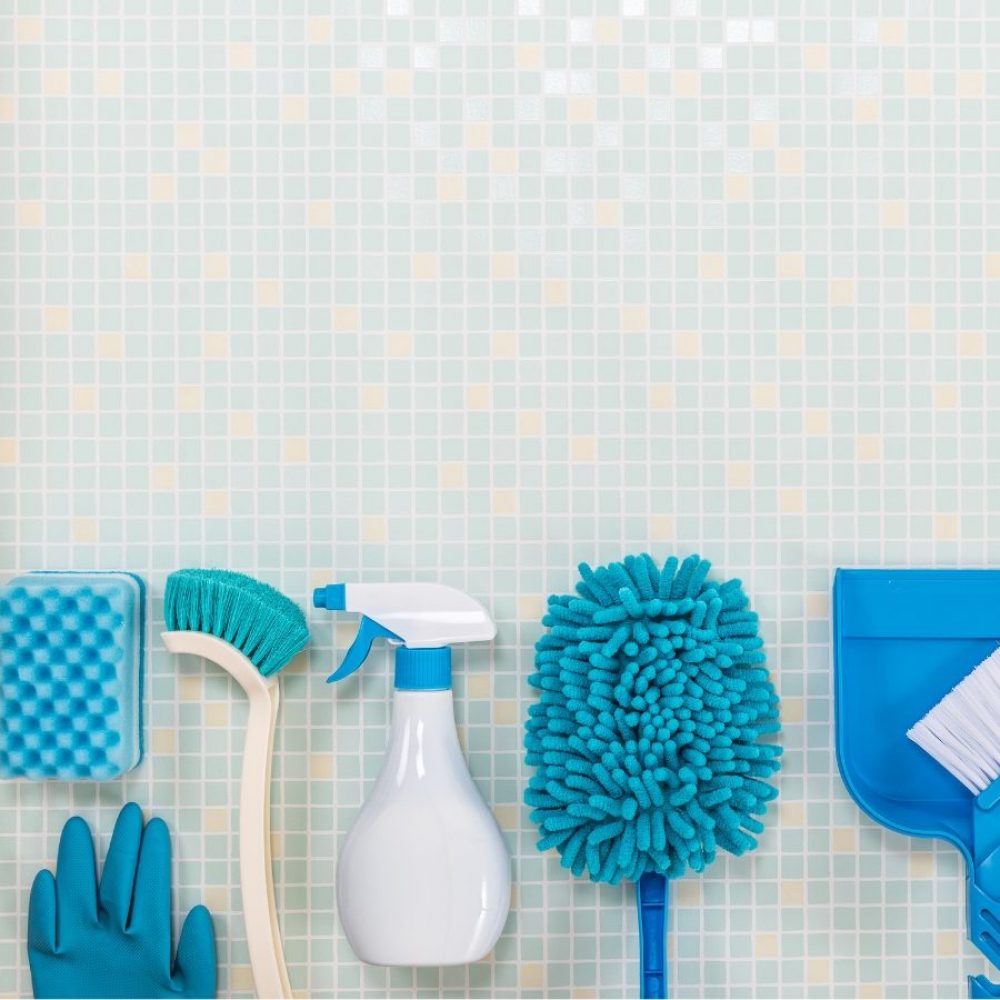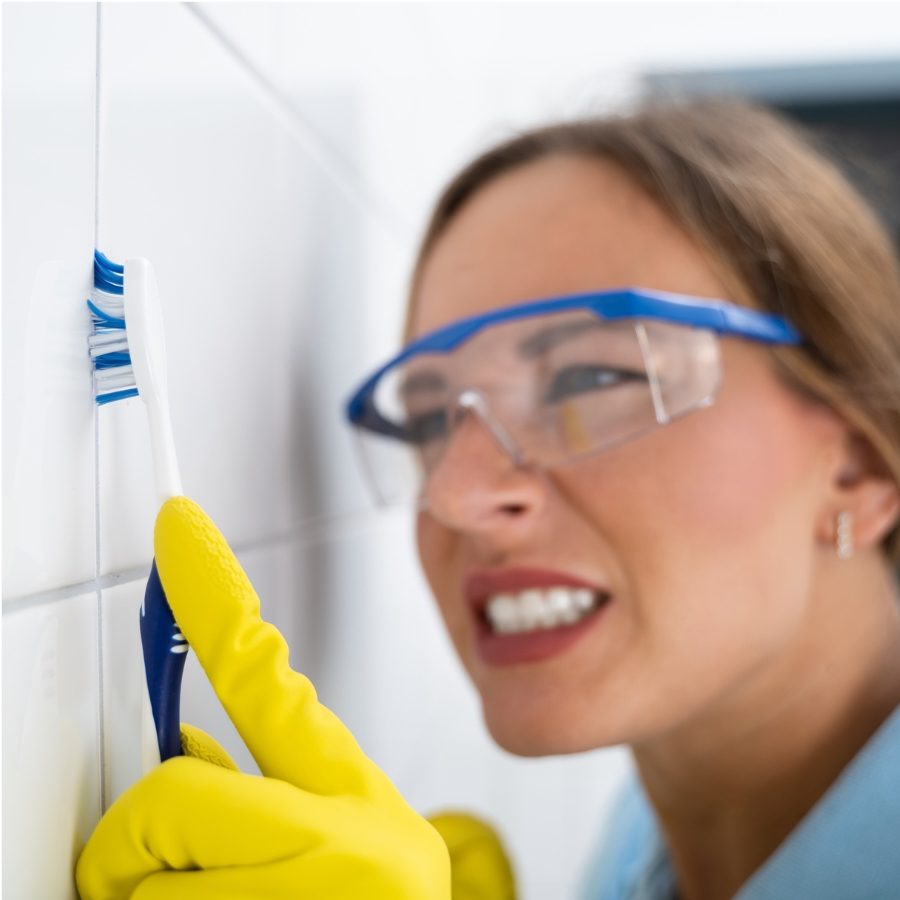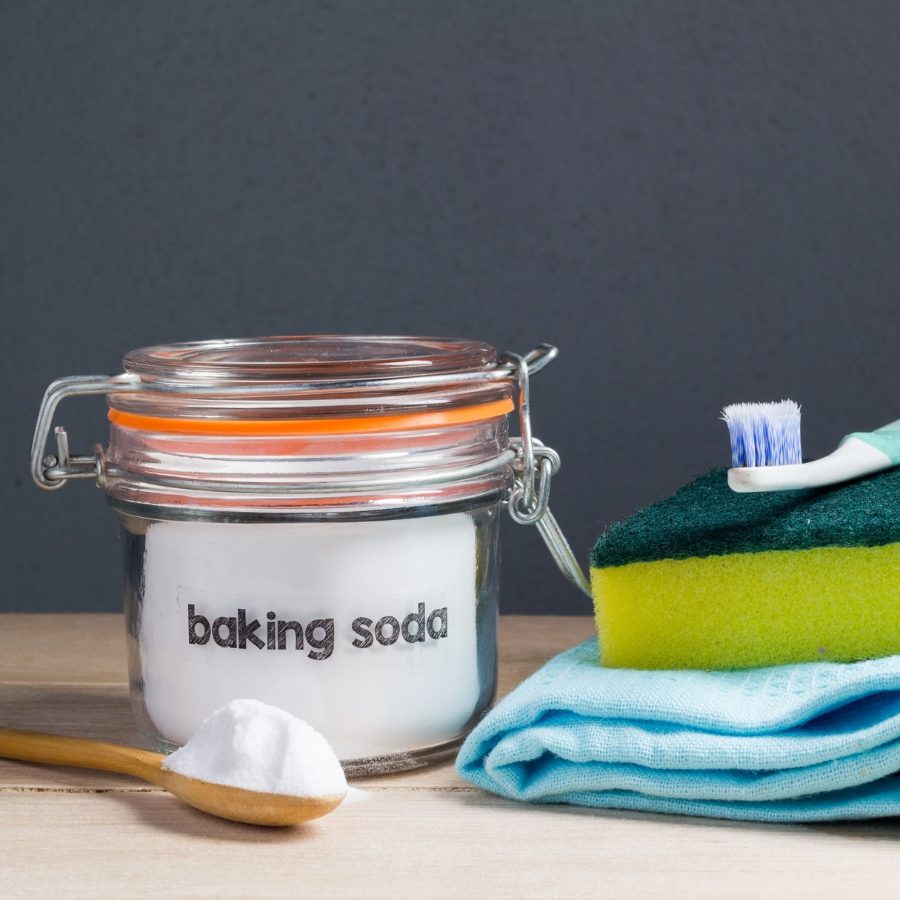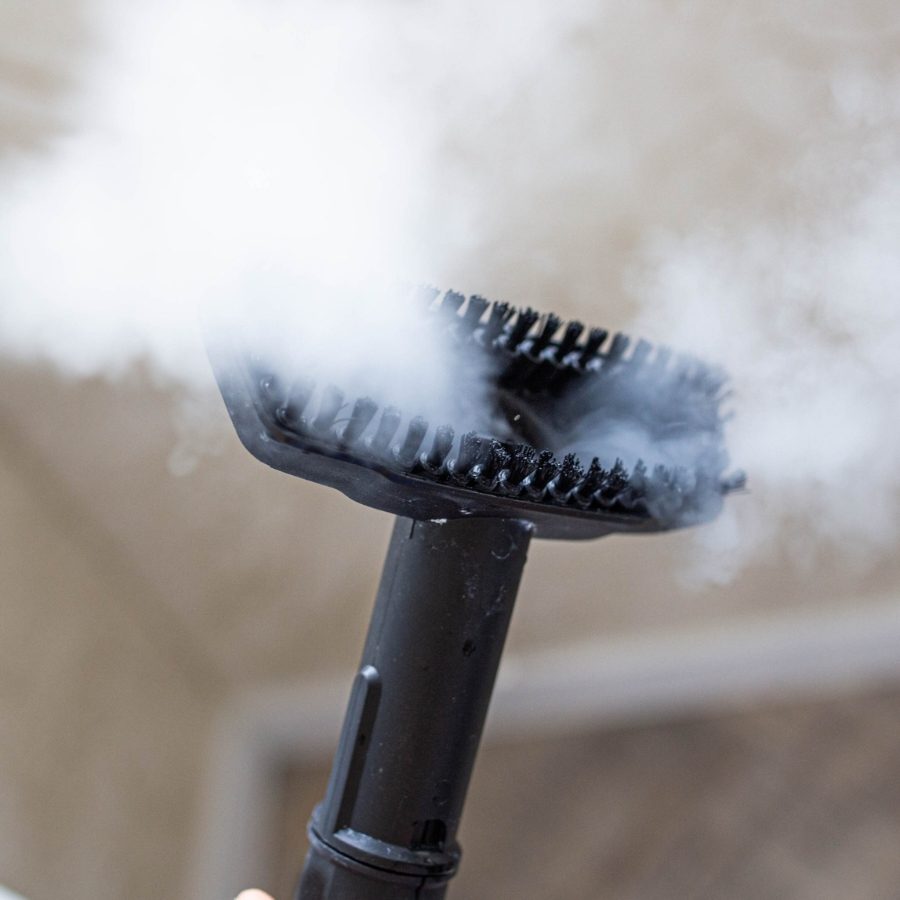Grout Cleaning: The Ultimate Guide

Key Highlights
- Understanding the different types of grout (sanded and unsanded) is crucial for effective cleaning
- Pre-cleaning essentials such as the right tools and safety measures ensure a successful cleaning process
- DIY grout cleaning techniques using baking soda, hydrogen peroxide, vinegar, and lemon juice can work wonders
- Professional solutions like steam cleaning and commercial grout cleaners can be effective for stubborn stains
- Preventative measures like sealing grout and routine cleaning help keep grout clean and prevent discoloration
- FAQs address common concerns about grout cleaning and maintenance
Introduction

Dirty grout can make even the most beautiful tiles look dingy and unappealing. While tiles themselves are resistant to dirt and stains, the porous nature of grout makes it prone to absorbing grease, grime, and spills. This is why knowing how to clean grout is essential to keep your floors, walls, and counters looking sparkly clean.
In this ultimate guide to successful grout cleaning, we will explore different types of grout, the importance of knowing your grout’s age and material, pre-cleaning essentials including tools and safety measures, DIY grout cleaning techniques, professional solutions for stubborn stains, preventative measures to keep your grout clean, and frequently asked questions about grout cleaning.
Whether you’re a beginner or looking for advanced tips, this guide will provide you with all the information you need to achieve successful grout cleaning and maintain the beauty of your tiles.
Understanding Your Grout: A Beginner’s Guide
Grout is the material that fills the gaps between tiles, providing stability and preventing moisture build-up. There are two main types of grout: sanded and unsanded. Sanded grout is used for larger joints, while unsanded grout is used for narrower joints. It’s important to understand the type of grout you have before attempting to clean it. Additionally, knowing the age and material of your grout can help determine the best cleaning method and products to use.
Identifying Grout Type: Sanded vs. Unsanded
When it comes to cleaning grout, it’s important to understand the difference between sanded and unsanded grout. Here are some key points to keep in mind:
- Sanded grout: This type of grout contains sand particles, which give it a rough texture. It is typically used for wider grout lines, such as those found in floors or countertops.
- Unsanded grout: Unsanded grout does not contain sand particles. It has a smoother texture and is used for narrower grout lines, such as those found in shower walls or backsplashes.
When cleaning sanded grout, it’s important to use a brush with stiff bristles to effectively scrub away dirt and grime. For unsanded grout, a softer brush or an old toothbrush can be used to avoid damaging the grout lines. Use the appropriate cleaning solution for each type of grout to ensure effective and safe cleaning.
The Importance of Knowing Your Grout’s Age and Material
The age and material of your grout can greatly impact its cleaning and maintenance needs. Here’s why it’s important to understand your grout’s age and material:
- Grout sealer: If your grout is old and has never been sealed, it may be more susceptible to staining and discoloration. Applying a grout sealer can help protect and preserve the original color of your grout.
- Type of grout: Different types of grout have different cleaning requirements. For example, epoxy grout is more resistant to stains and easier to clean than traditional cement grout. Knowing the type of grout you have can help determine the best cleaning method and products to use.
- Original color: Over time, grout can become discolored due to everyday dirt and grime. Knowing the original color of your grout can help you assess how much cleaning or restoration it may need.
- Regular maintenance: Understanding your grout’s age can help you establish a routine cleaning schedule to prevent long-term damage and keep your grout looking its best.
By knowing your grout’s age and material, you can take the necessary steps to clean and maintain it effectively, preventing damage and ensuring the longevity and beauty of your tiles.
Preparation: Making sure it’s Grout

Before you dive into your grout cleaning project there are a few steps you should take before you begin. As mentioned, it’s important to know what kind of grout you are working with. It’s important to know if it is sanded, or unsanded. Caulk can also be mistaken as grout. Be sure you know what you are working with before you begin.
- Caulk is a flexible material, usually made of silicone or latex that is used to seal joints and seams against leaks and drafts.
- Caulk is commonly used around bathtubs and sinks to fill gaps between different materials.
- Caulk remains flexible after application allowing for expansion and contraction.
- Grout is primarily used to provide structural support and stability to tiled surfaces such as floors, walls, and countertops.
Caulk cannot be treated the same way grout can. Heavy scrubbing can harm caulk and cause it not to create a proper seal. Be confident in your material before you begin any kind of cleaning. Even if you understand your grout always test a small inconspicuous area before you begin.
Essential Tools for Effective Grout Cleaning
To effectively clean grout, you’ll need a few essential tools. Here are some must-have items:
- Grout brush: A grout brush with stiff bristles is perfect for scrubbing away dirt and grime from grout lines. Look for a brush specifically designed for grout cleaning. Brushes with a scraping edge or rubber tip are superior for extra grimy areas. Smaller detail brushes can be helpful as well for hard to reach spots, or grout lines that are particularly thin.
- Old toothbrush: An old toothbrush can be used to reach tight corners and smaller grout lines that a larger brush may not reach. Toothbrushes also tend to have softer bristles that work well for unsanded or aged grout.
- Cleaning product: to clean grout effectively you will have to recruit help from some kind of cleaning product. We will mention some DIY solutions but if you are looking for something heavy duty this Black diamond is what works well for me. Always follow the safety precautions listed on whatever product you choose to use.
- Microfiber cloth: Use a microfiber cloth to dry the grout lines and ensure a streak-free finish.
Having these essential tools on hand will make your grout cleaning process much easier and more effective.
Safety Precautions to Protect Yourself and Your Tiles
Wearing gloves and safety goggles is crucial when handling grout cleaners to shield your skin and eyes. Ensure proper ventilation by opening windows or using fans to avoid inhaling fumes. Use mild cleaners to prevent damaging your tiles and always test a small area first. Keep children and pets away from the cleaning area. Additionally, never mix products together, using products against manufactures instructions can lead to hazardous situations. Taking these precautions will safeguard both you and your tiles during the cleaning process.
DIY Grout Cleaning Techniques That Work Wonders
Whichever product you choose to use, let the product work for you. All grout cleaning solutions both homemade, and store bought, work best when you let them sit. Grout is a porous surface and the solution will need time to penetrate the grout to effectively lift dirt. Letting the product sit, but not dry, makes it much easier to get grout back to beautiful.
The Magic of Baking Soda and Vinegar for Grout Cleaning

Mixing baking soda and vinegar creates a powerful yet gentle cleaner for grout. The fizzing action helps loosen dirt and grime, making it easier to scrub away. To use, make a paste of baking soda and water, apply it to the grout lines, then spray with vinegar. After the foaming stops, scrub with a brush and rinse. Mixing the vinegar and baking soda on the grout instead of in the spray bottle allows the foaming action of the ingredients to work for you. This natural solution is effective and safe for most types of grout, offering a cost-efficient and eco-friendly cleaning option. This solution is what I like to try first before moving on to more intense cleaners. Keep it handy for regular maintenance!
Hydrogen Peroxide: A Safe Bleach Alternative

Hydrogen peroxide is an excellent alternative to bleach for grout cleaning. Its gentle yet effective nature makes it safe to use on various surfaces without harsh repercussions. There are a few recipes for hydrogen peroxide grout cleaner. You can try a 1:1 peroxide and water mixture for lighter stains, or a mix of 2 parts baking soda with 1 part peroxide and a small squirt of dish soap. This mixture is better for more grimy areas that need some extra scrubbing action. Be sure to still incorporate skin and eye protection when using DIY solutions. For a safe and eco-friendly cleaning option, consider incorporating hydrogen peroxide into your cleaning routine.
Professional Solutions for Stubborn Grout Stains
When facing stubborn grout stains while cleaning your bathroom or other rooms with grout, professional solutions can be a game-changer. Consider steam cleaning for deep-seated grime or opt for commercial grout cleaners for tough discoloration. These solutions penetrate grout lines effectively, restoring them to their original color. By understanding the nature of the stain and choosing the right cleaning agent, you can revitalize your grout with minimal effort. Explore these professional options to tackle even the most persistent stains and rejuvenate the look of your tiles.
When to Consider Steam Cleaning

Steam cleaning is an excellent option when dealing with deeply embedded dirt or tough stains in your grout. If traditional cleaning methods have not yielded satisfactory results, it might be time to introduce steam cleaning into your routine. The high temperature of steam can effectively penetrate grout lines, loosening dirt and grime that are hard to reach with other methods. some professional services offer this option but you can try at home with the Bissell steam shot or other similar options. Consider steam cleaning for a thorough and efficient way to revitalize your grout and restore its original color and cleanliness.
The Role of Commercial Grout Cleaners
Commercial grout cleaners play a vital role in tackling stubborn stains and deeply embedded grime. These specialized cleaners are formulated to dissolve tough residues and restore grout to its original color. They are often more potent than homemade solutions, making them a reliable choice for challenging cleaning tasks. When faced with persistent stains or mold in your grout, opting for a commercial cleaner, like the one we mentioned above, can save you time and effort, ensuring a thorough and effective cleaning process.
Preventative Measures: Keeping Your Grout Clean
Sealing your grout is crucial for long-lasting protection. Routine cleaning with mild solutions like vinegar and baking soda helps avoid discoloration. Regularly inspect for moisture or mold to prevent long-term damage. Using a grout brush or old toothbrush for upkeep can make a significant difference. Remember, prevention is key to maintaining bright, clean grout in your living spaces.
Sealing Grout for Long-Term Protection
To ensure long-lasting protection for your grout, sealing is essential. A quality grout sealer acts as a barrier against moisture, stains, and mold, preserving the grout’s original color and integrity. Before applying the sealer, thoroughly clean the grout to remove any dirt or residues. Using a sponge or applicator, apply the sealer in a consistent manner, covering all grout lines. Let it dry completely before exposing the area to water or other substances that could compromise the sealant. Regular resealing will maintain your grout’s pristine condition.
Routine Cleaning Tips to Avoid Grout Discoloration
To maintain the pristine look of your grout and prevent unsightly discoloration, consistent routine cleaning is essential. Incorporate regular scrubbing to remove any buildup. Ensure thorough rinsing with plain water to eliminate residue completely. Remember, timely intervention can significantly prolong the original color and freshness of your grout, making routine maintenance a crucial part of your cleaning regimen.
Conclusion

In conclusion, maintaining clean grout is essential for the longevity and appearance of your tiles. Understanding the type of grout, using appropriate cleaning techniques, and implementing preventative measures are key to successful grout cleaning. Whether you opt for DIY methods or professional solutions, regular upkeep will ensure your grout remains pristine. Remember, sealing grout for protection and following routine cleaning tips can prevent discoloration and stubborn stains. If you need expert help, consider professional grout cleaning services for a thorough job. Keep your space looking fresh by taking proactive steps in grout maintenance.
Frequently Asked Questions
How Often Should I Clean My Grout?
Routine cleaning of grout is recommended to keep it clean and prevent dirt and stains from building up. The frequency of cleaning depends on the location and usage. For shower grout, it is recommended to clean it daily or every few days to prevent mold and soap scum buildup. For kitchen backsplashes and floor grout, weekly or biweekly cleaning is sufficient.
Can Vinegar Damage My Grout?
Vinegar is generally safe to use on grout; however, it may damage certain types of grout, such as colored grout or natural stone grout. It’s best to test a small, inconspicuous area before using ay product on your grout.
What’s the Best Way to Prevent Grout Stains?
The best way to prevent grout stains is by applying a grout sealer. A grout sealer creates a protective barrier that helps prevent stains from penetrating the grout. Additionally, regular routine cleaning and prompt clean-up of spills can help prevent grout stains.
Is Professional Grout Cleaning Worth the Cost?
Professionally cleaning your grout can be worth the cost, especially for stubborn stains or heavily soiled grout. Professional cleaners have the equipment and expertise to deep clean grout and restore its original appearance, saving you time and effort.